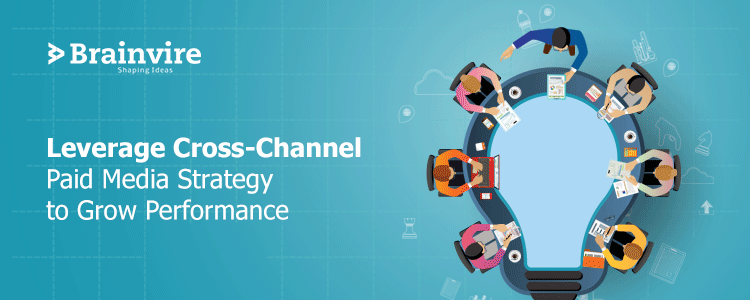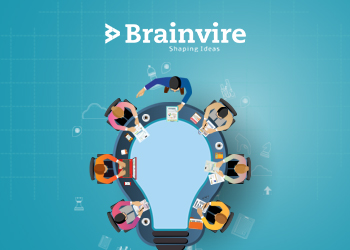
An efficient paid media strategy must conclude on the outcome that marketers drive for. Cross-channel marketing is a consumer-oriented, strategic SEO technique that is used by every marketer in this digital age. Cross-channel marketing provides the customer with a uniform experience while communicating with the brand through multiple online channels.
Cross-channel marketing is a powerful and efficient way to design your marketing strategy for optimum sales and conversion. So, before starting off with how to create an impressive cross-platform marketing strategy, first let’s see why you need cross-platform marketing for your business.
Why Do You Need a Paid Media Cross-platform Marketing Strategy?
Cross-platform marketing helps consumers shop through personalization. It enables marketers to reach their probable prospects across various channels to assure that their brand name is always visible to the customers via online portals.
A cross-platform marketing strategy helps in the smooth flow of the sales funnel across multiple channels. Marketers can pick up the campaign on another channel from where they left it in the initial channel.
Since marketing channels are increasing, opting for cross-platform marketing is of utmost importance. In order to increase your conversion rate and ROI, make sure that your brand name is visible to your target audience at all times.
Why Do Ensiled Strategies Don’t Work?
The key to achieving a seamless customer experience starts with open discussion or communication and de-siloing of the production team. Every member of your paid media team should work together and must be on the same page. Your business will gain so much by leveraging cross-platform marketing strategies.
Managing them independently across in-house or multiple agency offices makes it hard to get the most out of the paid media.
Siloed interaction hikes the odds of having.
- Inconsistent performance tracking, reporting, and attribution
- Disranged performance objectives
- Incapability to power cross-platform audience sharing feature
- Sluggish iteration on creative, money-optimized, and target work
How to Build a Powerful Paid Media Strategy?
Cohesive paid media effort empowers marketers to hit their required business goal effortlessly. Every brand needs a paid media strategy to grow, and the success depends on brand awareness. The more visible your brand name is, the higher are the chances of sales. So, make sure your paid media strategy has everything to cover you on-board.
Here are some important pointers to start building a cohesive paid-media strategy.
Focus on the Marketing Funnel
While designing an efficient paid media strategy target the market funnel entirely. Most brands exclude the top and middle of the funnel strategies, following long-term investments to steer maximum conversion-oriented actions for a reasonable price.
This is certainly good for some brands. Most of the time, the urgency to prove value and ROAS directs heavy stress on the bottom part of the marketing funnel. However, brands just ignore the money lying in front by avoiding the middle and top part of the marketing funnel.
The top and middle part of the marketing funnel does not provide a direct and immediate impact on the bottom part. So, most of the marketers ignore it to save some extra bucks. Marketers who have the patience to endure both top and middle parts can yield high-end results.
Establish Realistic Campaign Goals
Before spending any money, make sure your campaign goals are clear and concise. Develop campaign goal sections that lead to creating a high-class goal for your budget. A goal section or segment is formed by coalescing a platform, channel, and funnel target mix. Every section must have a distinct pair of KPIs and a target goal for that section.
By creating relevant goals for every campaign, marketers can establish reasonable expectations for each ad campaign’s success.
Accurate Reporting
When your goals are clear, the implementation of a precise tracking plan is of utmost importance. If you get this wrong, it will harm the performance cycle and optimizations as the ad campaigns go live.
Reporting gets trickier only when offline-to-offline dialogue paths are in the game. Specifying a proper attribution modeling is vital when the ad campaigns target multiple levels of the marketing funnel or require multiple interactions to convert.
Establishing the right model solely depends on your business. There is no such universal model that can fit every business.
Tips to Build an Efficient Paid Media Strategy
Now that you know the core benefits and functioning of paid-marketing strategies, here are some tips that will assist you in the marketing journey.
Build Buyer Profiles
It is important for any business to understand their consumers before creating a marketing strategy. For this, you need to build a vibrant buyer profile that includes information about the buyer’s preferences, buying habits, behavior, and communication mode. If you are already on any of the social media platforms try social listening to enrich the buyer persona.
With social media by your side, you can find out your consumer’s requirements, pain points, and intentions. Invest time in knowing your customers’ likes and dislikes. Keep track of your website’s performance by imitating the buyer’s journey.
Employ Channels that Go Well with One Another
Be selective while opting for cross-platform marketing. There are certain channels that work better together. First, notice the channel through which consumers interact the most and incorporate them for better results.
You can ask your customer to sign-in to your app while they are visiting the store. These two mediums complement each other, customers can take the product from the store but can make the payment from the app.
Centralize the Data
Keeping all the data within a customer data platform helps in capturing and analyzing the main touchpoints. This includes tracking URLs to create connections between online efforts with a person’s profile. Analyze and track the emails your company has sent them and determine which ones were found interactive.
Conclusion
A cross-platform paid media marketing implementation can be a bit coercing. Marketers require to take care of multiple channels while formulating the ad campaign. Keeping updates on every campaign and integrating the analytics is a tricky job, The digitization for the media industry has been driven by changing consumer behavior and expectations.
Related Articles
-
Success Story: 360 Degree Digital Marketing for Organic Products Market
Hi, I’m the Head of the Digital Marketing Department at Brainvire Infotech Inc, the top Digital Marketing agency known for its omnichannel approach. One of our clients, which specializes in
-
Boost Your SEO Strategy: Top AI-Powered Keyword Research Tools for 2025
Introduction Effective keyword research is essential for driving organic traffic and optimizing content for search engines. In 2025, AI-powered keyword research tools are becoming increasingly crucial in automating and enhancing
-
6 Best Social Media Advertising Platforms For 2025
Social media advertising is a growing industry that can help brands gain a competitive edge. They allow you to market your product or service and get a return on investment



